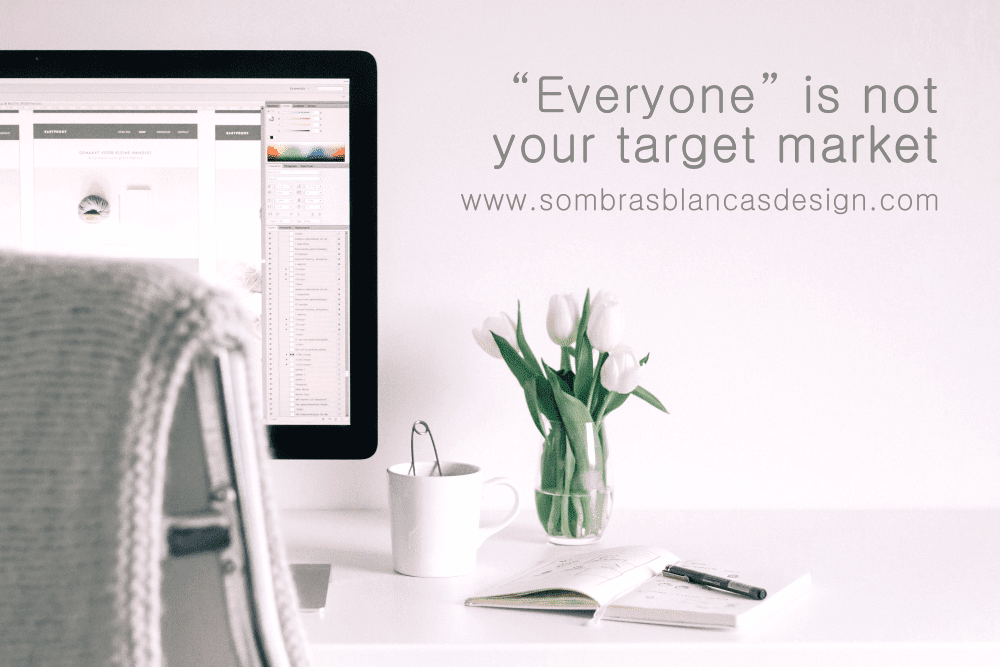“Everyone” is not your target market
Everytime I start a custom logo or website design project with a new client I send him/her a detailed questionnaire in order to get to know them and their businesses better. It is extremely important to have this extra information in order to start working on the initial design concepts. Having a clear aesthetic idea is never enough. One of those questions I always ask is “Who is your target market/audience?”. Very often I receive the wrong answer: “Everyone” or “Men and women ages 15-65”.
Why is this an incorrect approach? Well, it is really simple: you can’t speak to such a wide range of people using the same language -copy, images, products- and attract them all. If you try to reach different market segments by using different languages, styles and products you will end up having an inconsistent, very unprofessional looking brand.
Don’t get me wrong. You CAN market your products to women and men ages 15-65 but you need to specify a little more. It could be “women and men ages 15-65 who enjoy spending their free time outside” or “women and men ages 15-65 with a taste for fitness and clean eating”. Think about sex and age but also personality, attitudes, values, interests and lifestyles.
The services I offer, for example, are clearly addressed to small business owners looking for affordable solutions to enhance their brands. Trying to reach medium and large businesses at the same time would be a great mistake as products, prices and marketing strategy couldn’t remain the same. I’m also aware that the type of work I do, language I use and general feeling of my brand are most appealing to cheerful, dynamic women and I take advantage of that by reinforcing the idea.
Don’t know where to start? Look at your current customer base and ask yourself why they are buying from you. Look for patterns and you will end up noticing a clear trend for sure. In case you haven’t started marketing your products yet, keep an eye on competitors on your field and see who their target clients are, how they relate to them, etc. Be realistic about who you are able to help with your products or services and combine all that info to create a picture of your ideal customer.
Once you have defined your target audience don’t be afraid to make specific references to it on your website, shop and social media sites. It shouldn’t be a secret. Those who are not in your target segment wouldn’t have felt attracted to your products anyway and those who are your target customers will relate to your brand better. This will help you create a much solid appearance not only through your actual products but also through the general vibe of all your brand elements.
Of course, your ideal customer profile can evolve throughout time and you need to be prepared for those changes. But don’t forget if you try to reach everybody you will end up appealing to no one.


Sue'sAkorn Shop
March 17, 2015 at 8:36 pmWhat a helpful article. I appreciate the help a si STILL need to really narrow down who my target market is and to find them.
Julie
March 17, 2015 at 8:44 pmSame, Sue!